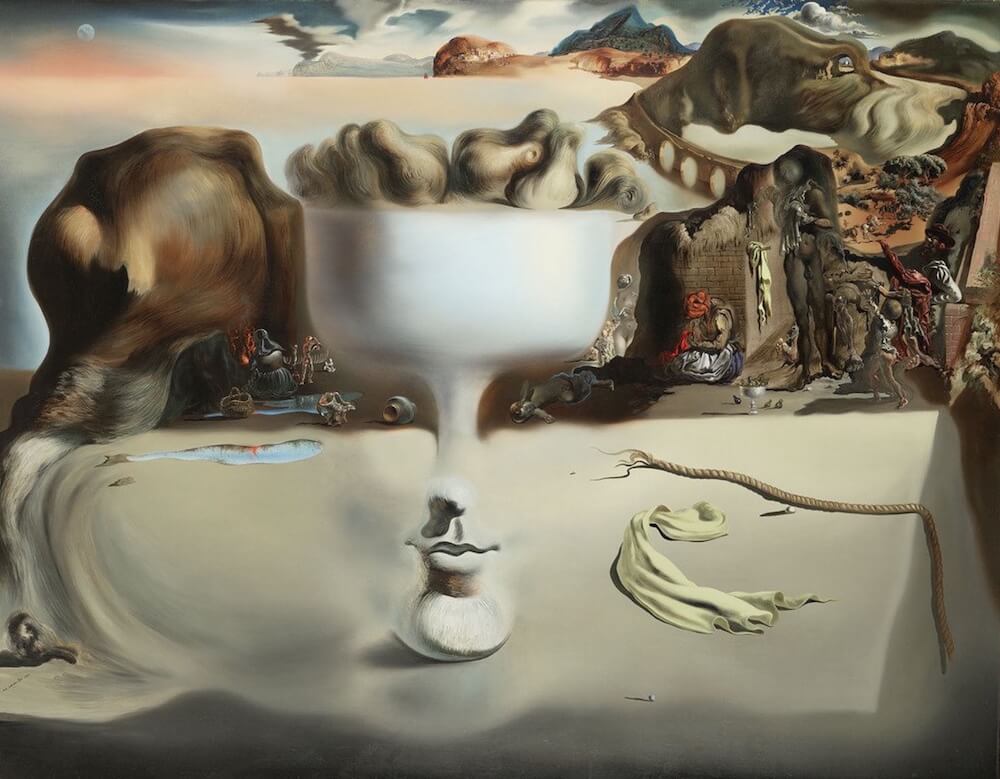Apparition of Face and Fruit Dish on a Beach, 1938 by Salvador Dali

By 1938, ongoing philosophical and political differences with the Surrealists, especially with the movement's founder and leader Andre Breton, led to Dali's break with the group. Breton had long thought Dali's art had become too commercialized and that Dali's growing fame threatened the unity and agenda of the Surrealists. His growing disgust with Dali's financial success as an artist led him to dub Salvador Dali with the anagrammatic nickname 'Avida Dollars,' describing what he perceived as Dali's greed for money and fame.
Though no longer associated with the Surrealists, Dali never abandoned his Surrealist pursuits entirely. For example, he continued to refine his 'paranoic-critical method,' a creative process of interpreting unconscious thoughts and feelings, into increasingly elaborate visual illusions called 'double images.' These double images are actually individual compositions depicting commonplace objects and surroundings from which multiple images emerge.
The title Apparition of Face and Fruit Dish on a Beach refers to three of the simultaneous images in the 1938 painting, though a careful study of the composition reveals a fourth image of a brown and white dog. Dali's double image paintings were wildly popular with the American public despite Andre Breton's criticism that the paintings were "entertainments on the level of crossword puzzles." Ironically, even though he had been expelled from the Surrealist movement, the public continued to associate Dali with the group, a perception that neither he nor Breton could erase.























